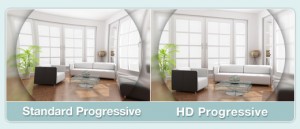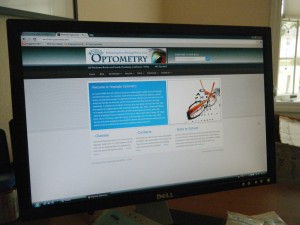Progressive lenses offer a range of vision as close to natural as can be obtained from prescription eyeglasses. Their hallmark is clearer vision at any distance or angle, and because there is no abrupt change of power anywhere in the lens, there are no visible dividing lines. They provide a great solution for many people who find their present lenses limit their vision for a particular distance or activity.
 Continuing advances in manufacturing techniques mean more precise lenses that deliver even sharper, clearer vision; most patients consider them an improvement over their older ones. Ongoing design research has produced ways to further increase depth perception and the amount of clear vision at any angle of the newer progressives. In addition, the latest technology eliminates swimming and swaying sensations associated with typical progressive lenses.
Continuing advances in manufacturing techniques mean more precise lenses that deliver even sharper, clearer vision; most patients consider them an improvement over their older ones. Ongoing design research has produced ways to further increase depth perception and the amount of clear vision at any angle of the newer progressives. In addition, the latest technology eliminates swimming and swaying sensations associated with typical progressive lenses.
Furthermore, if you’re like most progressive lens wearers then the exact prescription for each of your eyes is different. And the position of your nose and cheekbones affects the way you see through your lenses. So even with a correct prescription, older progressives were still limited in perfecting your vision. Increased measurements for fitting the newest progressive lenses produce a more customized, personalized set of glasses with the widest, clearest viewing zones possible, no matter how intricate the prescription. Ask us about the latest innovations in progressive lens designs and improve your vision experience. There are a variety of designs to choose from today.


